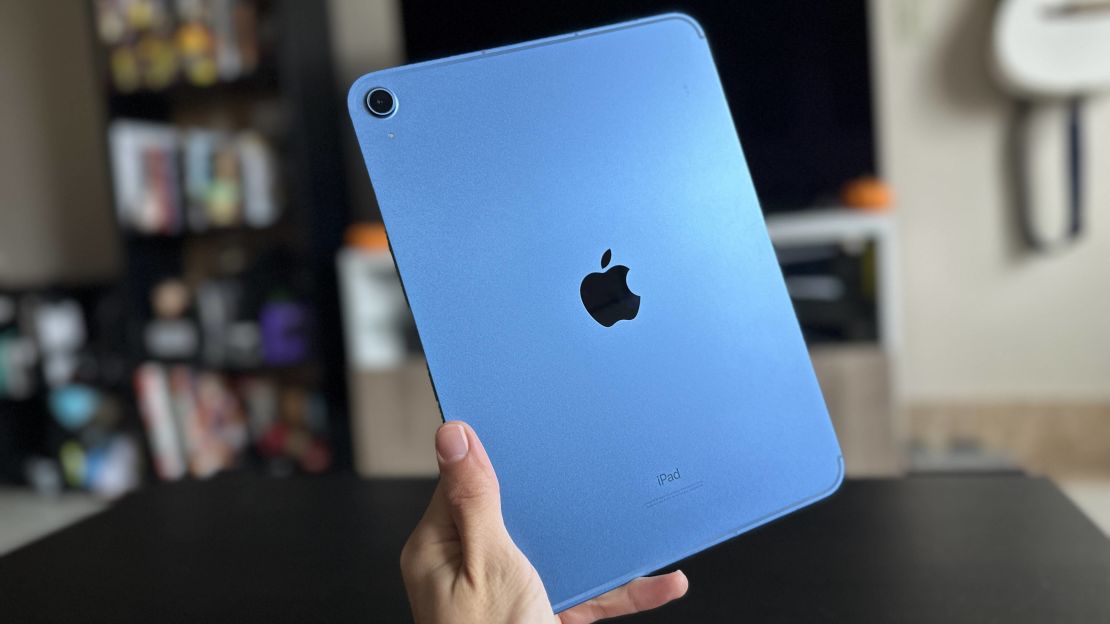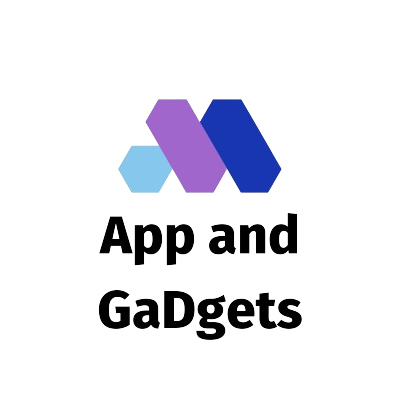The right tools are essential for success as students prepare for the new school year. Tablets are necessary because they combine portability, power, and adaptability to accommodate creativity and learning.

A tablet can simplify your workload and enhance your learning experience, whether you’re drawing, taking notes, or multitasking between assignments. We’ll break down the best tablets for students in 2024 in this guide to help you choose the best device for your academic journey.
In 2024, the Best Tablets for Students
Performance, portability, and adaptability are all important considerations when selecting a tablet for school. A closer look at the best tablets for students in 2024, each excelling in a different area to meet a variety of academic requirements, can be found here.
-
Best Generally: Mac iPad (tenth Era)
For students, the Apple iPad (10th Generation) stands out as the best tablet overall. It is ideal for a wide range of academic tasks due to its powerful performance and user-friendly interface. It can handle everything from running educational apps to editing documents and streaming lectures because it has the A14 Bionic chip. The stunning visuals of the 10.9-inch Liquid Retina display make it ideal for reading textbooks, watching instructional videos, or even playing casual games during breaks. It is a versatile tool for any student because it is compatible with the Apple Pencil (1st Generation), making it easy to take notes and draw.

Key Features:
- A14 Bionic chip for lightning-fast operation Display with a
2.10.9-inch Liquid Retina
- Support for the Smart Keyboard and Apple Pencil (First Generation)
- Battery life that lasts all-day
- Wacom One 13 Touch is the best choice for art students
The Wacom One 13 Touch is an excellent option for art students. This tablet was made to meet the needs of digital artists and designers. It is known for its precision and sensitivity. With 4096 levels of pressure sensitivity and a responsive touch screen, the 13.3-inch display is ideal for intricate artwork and illustrations. Multi-touch gestures are also supported, which can speed up your workflow. It performs better than any other tablet in art-related tasks, despite being slightly larger and heavier than other tablets.
Key Features:
- Touch input 13.3-inch full HD display
2.4096 levels of sensitivity to pressure
- Compatible with the numerous styluses offered by Wacom
- Ideal for digital design and drawing
- Samsung Galaxy Tab S9 FE+ is the best Android option
The Samsung Galaxy Tab S9 FE+ is the best option for students who prefer Android. The battery life, display quality, and performance of this tablet are all balanced. It is capable of handling demanding tasks like video editing and running complex applications thanks to the Snapdragon 888 chipset. The bright and sharp 12.4-inch Super AMOLED display is ideal for browsing, taking notes, and watching media. Additionally, the tablet comes with the S Pen, which is great for sketching or taking notes on the go.
Key Features:
- Super AMOLED display of 12.4 inches
- The powerful performance of the Snapdragon 888 chipset
- includes an S Pen for drawing and taking notes.
- A battery that lasts a long time and can be charged quickly
- The Apple iPad Mini (6th Generation) is the best portable tablet
The Apple iPad Mini (6th Generation) is the perfect companion for students who value portability. With the A15 Bionic chip, this tablet delivers rapid and smooth performance across a variety of tasks despite its small size. Its bright and clear 8.3-inch Liquid Retina display is ideal for reading, browsing, and streaming. The iPad Mini is compatible with the Apple Pencil (2nd Generation), which can be attached to the side of the tablet by magnetism, making it easy to take notes while you’re on the go.
Key Features:
- A15 Bionic chip for rapid and effective operation
- Liquid Retina display, 8.3 inches
- Accepts Apple Pencil (second generation)
- Ultra-light and extremely portable
- Microsoft Surface Pro 9 is the best 2-in-1 tablet
For students who want the versatility of a tablet and laptop, the Microsoft Surface Pro 9 is the best 2-in-1 tablet. It is powerful enough to run full desktop applications like Microsoft Office and Adobe Creative Suite thanks to its Intel Core i5 or i7 processor options. When you’re writing notes or sketching out ideas, the 13-inch Pixel Sense Flow display supports a 120Hz refresh rate, making it a smooth and responsive experience. The Surface Pro 9 is an all-in-one solution for students because it is compatible with the Surface Pen and Surface Keyboard and has a built-in kickstand.
Key Features:
- Core i5 and i7 processors from Intel for robust performance
- Display with 120Hz refresh rate on a 13-inch Pixel Sense Flow
- Two-in-one design with keyboard and kickstand support
- Ideal for creative and productive tasks
With distinctive features that meet a variety of student needs, each of these tablets excels in its category. There is a tablet on this list that will assist you in succeeding in your studies, regardless of whether you are looking for raw power, artistic capabilities, or portability.
How to Select the Best Tablet for Your Purposes
There is more to picking the right tablet for school than just picking the most recent model. Your decision should be based on your preferences, finances, and academic requirements. A breakdown of the most important aspects to consider when selecting a tablet, as well as insights into whether a tablet or laptop might be better for your studies, can be found here.
- Questions to Ask
- Needs for Use
Consider your primary use of the tablet for academic tasks. On the off chance that your emphasis is on taking notes, understanding course readings, and perusing the web, an essential model might get the job done. However, you’ll need a tablet with better graphics and more processing power if you want to run demanding applications like video editing software or graphic design software.
Note-Taking and Drawing: If you prefer to write notes down or need to draw diagrams and illustrations, a tablet with a stylus that is sensitive to a lot of pressure, like the Apple Pencil or Samsung S Pen, is a good choice. For a more natural writing experience, look for tablets with a responsive display and palm rejection features.
Multitasking: A tablet with a powerful processor and sufficient RAM is essential for students who need to manage multiple tasks at once, such as streaming lectures, typing notes, and conducting online research. Tablets with multitasking capabilities like split-screen and app pairing can boost productivity.
1.Software System
IOS (Apple iPad): An iPad is a natural choice if you are already invested in the Apple ecosystem. IOS is well-known for its user-friendly user interface, extensive app library, and seamless compatibility with other Apple devices. Additionally, iOS-optimized educational apps and tools provide a smooth user experience.
Android: Android tablets, like Samsung’s, are more adaptable and customizable. They are ideal for students who rely on Google Drive, Docs, and other cloud-based tools because they can be easily integrated with Google services and support a wide range of apps.
Windows: A Windows-based tablet like the Microsoft Surface Pro is an excellent choice for students who require a tablet that can also function as a laptop. Windows tablets are necessary for students who require access to Microsoft Office, Adobe Creative Suite, or programming tools because they run complete desktop applications.
2. Portability
Size and weight: For students who need to carry their tablet between classes, the library, and their homes, portability is very important. While larger tablets, such as the Surface Pro or iPad Pro, offer more screen real estate at the expense of added weight, smaller tablets, such as the iPad Mini, are lightweight and simple to transport.
Battery Life: Make sure the tablet you choose can power through a full day of classes and study. The majority of modern tablets have a battery life of at least 8 to 10 hours, but heavy use, like streaming videos or using a lot of apps, can drain the battery faster.
3.Budget
The cost of a tablet: can range anywhere from $300 on the budget to over $1,000 on the more expensive end. Before you buy, figure out your budget and decide if you need the extra features of higher-end models.
Durability: Think about how long you intend to use the tablet. If your higher-end model will serve you throughout your academic career without requiring an upgrade, it might be more cost-effective to buy it in the long run.
- Tablet versus Which laptop is better for school?
- Portability and Flexibility
Tablets: Tablets are favored by students who are constantly on the move due to their portability and ease of use. They are great for reading, taking notes, and light browsing. Additionally, keyboard attachments are supported by many tablets, making them a lightweight alternative to laptops. Tablets, on the other hand, might struggle with more difficult tasks like running a lot of software at once or multitasking a lot.
Laptops: Students who need to run complex applications, manage large files, or do a lot of multitasking can benefit from laptops’ increased power and adaptability. Although they are heavier and less portable than tablets, laptops typically have larger screens and more storage space.
- Options for Input
Tablets excel at touch-based: Input and frequently support styluses for handwriting and drawing, which is a significant advantage for art students or individuals who prefer digital note-taking. Studying and working on creative projects may become more intuitive with the help of this natural input method.
Keyboard and Mouse: Laptops have a built-in keyboard and track pad, a more conventional method of input that can be more effective for typing long essays, coding, or other precise tasks. Even though some tablets come with keyboard attachments, they might not be as comfortable or as useful as a laptop keyboard.
- Compatibility and Software
Software for Tablets: Tablets have mobile operating systems, so they can only run apps from the App Store or Google Play. Even though these app stores have a wide range of educational tools, they might not have complete desktop applications, which are needed by some students.
Software for Laptops: Students can install and use professional-grade software like AutoCAD, Adobe Photoshop, and Visual Studio on laptops that run full desktop operating systems like Windows or macOS. Because of this, laptops are a better option for students studying subjects that call for specialized software.
- Prices to Consider
Efficiency in Cost: Tablets can be a less expensive option, especially if you only require the most basic features. They also have fewer moving parts and a longer battery life, making them generally less expensive to maintain. However, adding extras like a keyboard or stylus can increase the price.
Value for Money: When it comes to overall performance and functionality, laptops typically provide better value for money. Although they are more expensive in the beginning, their capacity to handle a wider range of responsibilities can make up for the cost, particularly for students enrolled in rigorous academic programs.
Conclusion
Your productivity and learning experience can be significantly enhanced by selecting the appropriate tablet for your educational requirements.
There is a tablet available that meets your requirements, regardless of whether portability, performance, or creative capabilities are more important to you. You can find the ideal device to support your educational journey by taking into account factors such as usage requirements, operating system, portability, and budget.
The right choice will enable you to excel in your studies and beyond, whether you choose the versatility of a 2-in-1, the artistic precision of a specialized tablet, or the overall reliability of a top-rated model.
